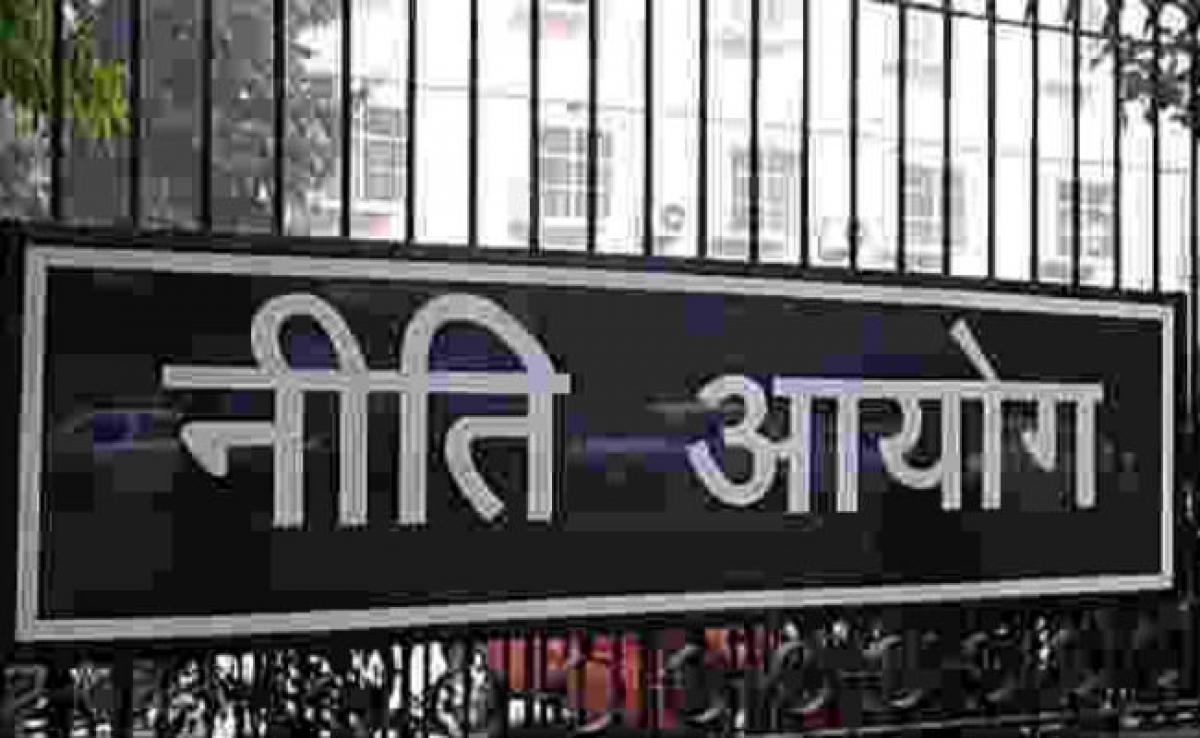Live
- Jesus is synonymous with sacrifice, forgiveness: Ponnam
- HC announces verdict in Kannada for the first time
- Uttam releases water from Nizam Sagar for Rabi crop
- TG to be Rs 84L cr economy in 10 years: Sridhar Babu
- First TGCHE, V-Cs meet deliberates on higher education roadmap for state
- 2 senior professors to join NALSAR
- Former Principal of SPW College passes away in US
- Hyderabad: Govt out to remove electric poles, transformers on roads across city
- KCR goes into huddle with State legal eagles
- Formula E race: KTR to be arrested soon?
Just In

The Niti Aayog has suggested conducting a study to assess the country\'s groundwater banking potential by 2018 to effectively manage the limited resource.
The Niti Aayog has suggested conducting a study to assess the country's groundwater banking potential by 2018 to effectively manage the limited resource.
Groundwater banking, the think tank said, is a practice of recharging specific amount of water in a groundwater basin that can be later withdrawn and used by the entity that deposited the water.
The policy think tank has also recommended expediting the "Groundwater Development and Management" programme, under which the Centre is preparing aquifer management plans and quantifying the availability of water in aquifers. An aquifer is a layer of permeable rocks which can contain or transmit groundwater.
The Aayog said that in 4,530 blocks (which were surveyed in 2011) in eastern and northeastern states, where groundwater development has been reported as safe, groundwater-based irrigation may be developed sustainably.
India's groundwater resource amount to 433 billion cubic metres (BCM) and is 39 per cent of the total water resources. Surface water resources make up the remaining 61 per cent. Groundwater accounts for around 63 per cent of the total water used in irrigation.
"A feasibility study should be conducted for assessing the groundwater banking potential in India by 2018. Some clear advantages of groundwater banking are: low fixed costs as compared to dam and reservoir construction, no requirement for rehabilitation and resettlement and less environmental changes," it said.
The Aayog has made the suggestions in "Three Year Action Agenda, 2017-18 to 2019-20", released by Finance Minister Arun Jaitley three days ago.
On aquifer mapping being carried out under the Groundwater Development and Management programme, it said the scheme should be prioritised in pockets where the resource is "over-exploited, critical and semi-critical".
As on March 31, 2011, out of the 6,607 administrative units surveyed, 4,530 units were safe. 1,071 were found to be over-exploited, 217 were critical, 697 semi-critical and 92 completely saline.
More than 50 per cent of the over-exploited and critical administrative units were located in Delhi, Haryana, Punjab, Rajasthan and Daman and Diu, according to the survey.
Groundwater development was reported more than 100 per cent in Punjab, Delhi, Rajasthan and Haryana, while in northeastern and eastern states it was lower than the national average of 62 per cent.

© 2024 Hyderabad Media House Limited/The Hans India. All rights reserved. Powered by hocalwire.com







